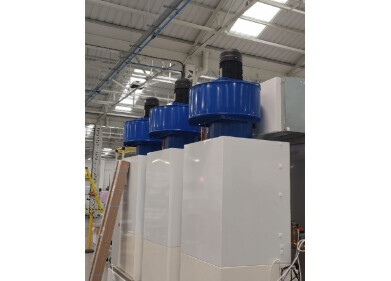Laboratory Products
What is Sample Handling?
Jun 10 2021
All laboratories, whether located at a state-of-the-art research centre or a suburban high school, must have a good understanding of best-practice sample handling techniques. When developing sample handling procedures there are several factors to keep in mind, some of the most important outlined below:
-
Preservation
Preservation describes the handling processes designed to safeguard the integrity of a sample after collection and minimise the risk of biological or chemical activity occurring. Cooling is one of the most effective ways to preserve samples, with 4° C considered an optimal temperature for many specimens. Depending on the type of sample and the analysis methods being used, chemical preservatives may also be used.
-
Holding times
When handling samples it’s important to keep holding times in mind. This refers to the maximum amount of time a sample can remain in storage before analytical results are compromised. For example, the CDC recommends COVID-19 swab samples are held for a maximum of 72 hours after collection. This timeframe can be extended if specimens are stored at temperatures of -70°C or below. Many microbial samples have short holding times of just a few hours, while metals can often be stored for several months without compromising results.
-
Chains of custody
Establishing a chain of custody is an integral part of any gold-standard sample handling procedure. This involves clearly documenting the security and transportation of a sample, from the time of collection to the moment it undergoes analysis. Custody seals are often used to protect samples during transport and ensure they remain legally compliant. Ultimately, a detailed and accurate chain of custody ensures laboratory results are reliable and can be used for enforcement, compliance and litigation purposes if necessary.
-
Minimising the risk of out-of-specification errors
Caused by both human and mechanical errors, out-of-specification (OOS) results are one of the biggest risks faced by modern laboratories. Not only can OOS errors compromise results, but they can also prompt regulatory bodies like the US Food and Drug Administration (FDA) to launch investigations and issue large fines. This puts both the reputation ad the financial stability of a company at risk.
With so much at stake, minimising OOS results is a top priority for pharmaceutical manufacturers. Automation has become a hugely valuable tool, with modern laboratories relying on automated instruments, equipment and control systems to reduce the risk of OSS errors. Want to know more? Designed to improve speed, accuracy and safety, the XPR Automatic Balance has elevated sample handling procedures to a new level. Find out more about the latest technology from Mettler-Toledo in ‘How gravimetric sample preparation is helping pharmaceutical manufacturers meet the demands of consumers, regulators, and the market.’
Digital Edition
Lab Asia 31.2 April 2024
April 2024
In This Edition Chromatography Articles - Approaches to troubleshooting an SPE method for the analysis of oligonucleotides (pt i) - High-precision liquid flow processes demand full fluidic c...
View all digital editions
Events
Apr 22 2024 Marrakech, Morroco
Making Pharmaceuticals Exhibition & Conference
Apr 23 2024 Coventry, UK
Apr 23 2024 Kintex, South Korea
Apr 23 2024 Seoul, South Korea
Apr 24 2024 Jakarta, Indonesia
.jpg)
.jpg)






.jpg)









